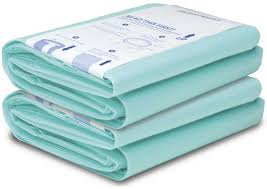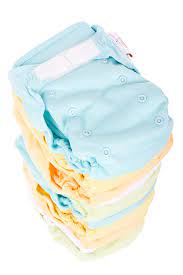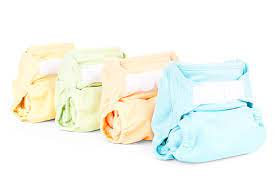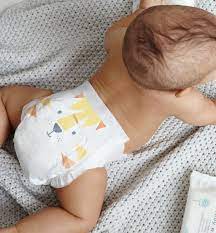
How To Use Biodegradable Diapers: A Guide For New Parents
By Rhea Philips | June 28, 2023
As new parents, the thought of choosing the right diaper for your baby can be overwhelming. With so many options on the market, it can be difficult to know where to start.
However, if you are looking for an environmentally-friendly option that is also safe for your little one, then biodegradable diapers may be the perfect choice.
Biodegradable diapers have become increasingly popular in recent years due to their ability to break down naturally and reduce waste in landfills. Not only do they benefit the environment, but they can also provide peace of mind for parents who want a safer and healthier option for their baby’s delicate skin.
In this guide, we will explore everything you need to know about using biodegradable diapers – from choosing the right brand to properly disposing of them – so that you can make an informed decision and feel confident in your parenting choices.
Key Takeaways
- Choosing the right brand and proper fit is crucial for absorbency, leak protection, comfort, and cost-effectiveness.
- Regular diaper changes and signs of discomfort should be taken into consideration for maintaining hygiene and preventing rashes and infections.
- Proper disposal, such as composting or recycling, is essential for full decomposition and minimizing environmental impact.
- Biodegradable diapers are an environmentally-friendly and safe option for babies, made from sustainable materials and free from synthetic chemicals and additives, and are just as effective as traditional disposable diapers in terms of absorbency and leakage prevention.
- Key Takeaways
- Understanding the Benefits of Biodegradable Diapers
- Choosing the Right Biodegradable Diaper Brand
- Ensuring a Proper Fit for Your Baby
- Knowing When to Change a Biodegradable Diaper
- Understanding the Materials Used in Biodegradable Diapers
- Properly Disposing of Biodegradable Diapers
- Addressing Concerns about Biodegradable Diapers
- Making a Positive Impact on the Environment with Biodegradable Diapers
- Frequently Asked Questions
- Are biodegradable diapers more expensive than regular disposable diapers?
- Can biodegradable diapers be composted at home?
- Are biodegradable diapers as absorbent as regular disposable diapers?
- Can biodegradable diapers be used for overnight use?
- How long does it take for a biodegradable diaper to decompose in a landfill?
- Conclusion
Understanding the Benefits of Biodegradable Diapers
The ecological advantages of using biodegradable diapers are numerous and significant, as they reduce the amount of waste in landfills and contribute to a healthier environment for future generations.
Unlike traditional diapers that can take hundreds of years to decompose, biodegradable diapers break down quickly and naturally, leaving no harmful residue or toxins behind. This eco-friendly option is not only better for the planet but also healthier for your baby.
Biodegradable diapers are made from sustainable materials such as bamboo, cotton, or other plant-based fibers. These materials are free from synthetic chemicals and additives that can cause skin irritation or allergic reactions in babies with sensitive skin.
In addition, some biodegradable diaper brands use natural dyes or fragrances to further minimize any potential harm to your baby’s health.
Choosing the right biodegradable diaper brand is crucial in ensuring you get the most out of their benefits. It’s important to look at factors such as absorbency, leak protection, comfort level for your baby, and cost-effectiveness.
By doing so, you’ll be able to find a brand that not only meets your environmental values but also satisfies your practical needs as a parent.

Choosing the Right Biodegradable Diaper Brand
Selecting the appropriate brand of eco-friendly diapers is a crucial step in ensuring that your baby stays comfortable and healthy while also reducing their environmental impact. With so many eco friendly options available, it can be challenging to choose which one works best for you and your family.
Here are three factors to consider when selecting an eco-friendly diaper brand:
- Material: Look for diapers made from sustainable materials such as bamboo or organic cotton. These materials are biodegradable and free from harmful chemicals that could irritate your baby’s sensitive skin.
- Cost comparison: Eco-friendly diapers may cost more than traditional disposable ones, but they offer long-term savings in terms of reduced environmental impact and potential health care costs associated with rashes caused by chemical-laden products.
- Brand reputation: Research the brands you’re considering to ensure they have a good reputation for quality and customer satisfaction.
Choosing the right eco-friendly diaper brand is just the first step in reducing your family’s environmental impact while keeping your baby comfortable and healthy. The next step is ensuring a proper fit for your little one, which we’ll explore in detail in the following section.
Ensuring a Proper Fit for Your Baby
Achieving a comfortable and secure fit for your baby’s diaper is crucial for their overall comfort and well-being. A proper fit ensures that the diaper stays in place, preventing any leaks or accidents. To achieve a proper fit, first, choose the right size based on your baby’s weight. It is important to note that different brands may have slightly different sizing charts.
Once you have the right size, make sure to properly fasten the diaper around your baby’s waist. The tabs should be snug but not too tight as they may cause discomfort or irritation. Also, check that there are no gaps around the legs where leaks can occur. Adjusting the elastic around the legs can help create a better seal and prevent any unwanted leakage.
Ensuring a proper fit not only prevents leaks but also increases comfortability for your baby. A poorly fitting diaper can cause irritation and lead to skin rashes or infections. By taking the time to adjust and ensure a proper fit, you can keep your little one happy and healthy.
Knowing when to change a biodegradable diaper is just as important as ensuring proper fit – it helps maintain hygiene standards for your child’s health and wellness.


Knowing When to Change a Biodegradable Diaper
Understanding the appropriate time to change a biodegradable diaper is essential for maintaining optimal hygiene and preventing potential health issues in infants. While biodegradable diapers are designed to be more absorbent than traditional cloth diapers, it is still important to change them regularly.
Signs of discomfort such as crying or fussiness may indicate that your baby’s diaper needs changing, but waiting until your baby shows obvious signs of distress can lead to uncomfortable rashes and infections.
The timing of changes depends on several factors such as how often your baby feeds and how much they drink, as well as their age and weight. In general, younger babies will need more frequent diaper changes due to their smaller bladders and faster metabolism.
A good rule of thumb is to check the diaper every two hours during the day and once during the night. However, if you notice that your child’s diaper feels heavy or has leaks before this timeframe, consider changing it sooner.
Knowing when to change a biodegradable diaper is crucial for both the comfort of your baby and their overall health. By paying attention to signs of discomfort and following a regular schedule based on age and weight considerations, parents can ensure that their little ones stay clean, dry, and happy.
Understanding these basics will also make it easier to choose the right materials when selecting biodegradable diapers.
Understanding the materials used in biodegradable diapers can further enhance your knowledge about what makes them an eco-friendly option for parents who want a sustainable alternative without sacrificing convenience or quality.

Understanding the Materials Used in Biodegradable Diapers
Examining the various components of biodegradable diapers can reveal their potential environmental impact and inspire consumers to make more conscious choices.
Biodegradable diaper materials are typically made from plant-based fibers, such as bamboo or cornstarch, which decompose more quickly than traditional plastic materials. These diapers also often contain natural ingredients, such as aloe vera or chamomile, that are gentle on babies’ skin.
While biodegradable diapers may seem like a more environmentally-friendly option than traditional disposable diapers, it’s important to consider their full life cycle. While they do break down faster in landfills than regular diapers, they still require proper disposal in order for them to fully decompose.
Moreover, the production process of biodegradable materials can still have negative environmental impacts if not done sustainably. Understanding the materials used in biodegradable diapers is an important step towards making informed decisions about environmentally-conscious parenting practices.
While these types of diapers offer potential benefits over traditional disposable options, it’s important to consider the full life cycle of the product and properly dispose of them in order to minimize their environmental impact.
In the next section we will discuss how parents can take this final step in ensuring that they are using biodegradable products responsibly.


Properly Disposing of Biodegradable Diapers
Proper disposal of plant-based diapers is essential for their full decomposition and to minimize environmental impact. Unlike traditional disposable diapers, biodegradable diapers are designed to break down quickly with the help of microorganisms in the soil.
Therefore, it is recommended that parents dispose of them in composting options available in their local area. Composting is a process where organic materials such as food waste, yard trimmings, and now biodegradable diapers can be broken down into nutrient-rich soil.
However, not all composting options may accept biodegradable diapers due to regulations set by state or city governments. It is important for parents to research the specific regulations in their area before disposing of these types of diapers.
Some cities may have designated compost bins that accept both food waste and plant-based products like biodegradable diapers, while others may require these items to be disposed of separately.
In addition to checking on regulations surrounding composting options, parents should also consider alternative methods for properly disposing of biodegradable diapers when necessary.
For example, some companies offer mail-in programs where used plant-based diapers are sent back to the manufacturer for proper disposal or recycling.
By being mindful about how they dispose of these eco-friendly alternatives to traditional disposable diapers, parents can make a significant impact on reducing waste and helping protect the environment.
Transition: Now that we have covered proper disposal methods for biodegradable diapers let’s move on to addressing concerns about this type of diaper option.
Addressing Concerns about Biodegradable Diapers
Despite the growing popularity of eco-friendly diaper options, concerns have been raised about the effectiveness and potential risks associated with biodegradable diapers.
One common concern is whether or not these diapers can be composted. The answer is yes, but there are certain guidelines that need to be followed. First, it’s important to check if your local composting facility accepts biodegradable diapers. If they do, make sure you remove any solid waste before placing the diaper in the compost bin.
Another concern about biodegradable diapers is that they may not be as effective as traditional disposable diapers in terms of absorbency and leakage prevention. However, this myth has been debunked by many parents who have found that biodegradable diapers work just as well as their non-biodegradable counterparts. In fact, some brands even boast higher levels of absorbency than traditional disposable diapers.
Overall, there are valid concerns about the use of biodegradable diapers, but many can be addressed through proper education and research. By understanding how to properly dispose of these diapers through composting options and debunking myths surrounding their effectiveness, parents can feel confident in making a positive impact on the environment with biodegradable diaper options.
Making a Positive Impact on the Environment with Biodegradable Diapers
To reduce the environmental impact of disposable diaper waste, exploring sustainable options such as biodegradable and compostable diapers is an important step. Biodegradable diapers are designed to break down easily in natural environments without causing harm to the ecosystem.
Unlike traditional diapers that can take hundreds of years to decompose, biodegradable diapers disintegrate within a few months or years. Using biodegradable diapers can have a positive impact on the environment in several ways. First, they reduce the amount of non-biodegradable waste that ends up in landfills and oceans.
Second, they use fewer resources during production than traditional disposable diapers, which means less energy consumption and carbon emissions. Third, some biodegradable diaper brands use eco-friendly materials like bamboo or corn-based fibers instead of petroleum-based plastics that contribute to pollution.
Choosing biodegradable diapers over traditional ones is a simple but effective way for new parents to make a positive impact on the environment. By understanding how these products work and their benefits for sustainability, parents can feel more confident about their choices while improving their own carbon footprint.
With increasing concerns about climate change and environmental degradation, investing in eco-friendly baby products like biodegradable diapers has become an essential part of responsible parenting.
Frequently Asked Questions
Are biodegradable diapers more expensive than regular disposable diapers?
When considering cost comparison, biodegradable diapers may appear more expensive than regular disposable diapers. However, taking into account the environmental impact and potential long-term savings from reduced waste management costs, biodegradable options may be a practical investment.
Can biodegradable diapers be composted at home?
Biodegradable diapers can be composted at home, but it requires specific conditions to break down properly. The environmental impact depends on the disposal method and materials used, as well as the energy required for production.
Are biodegradable diapers as absorbent as regular disposable diapers?
Ironically, eco-friendly alternatives such as biodegradable diapers may not match the absorbency of traditional disposable options. However, they still offer a more sustainable option than cloth diapers and can be disposed of responsibly.
Can biodegradable diapers be used for overnight use?
Biodegradable diapers can be used for overnight use but may require more frequent changes to prevent leakage. It is important to follow the manufacturer’s instructions and ensure a proper fit for optimal performance.
How long does it take for a biodegradable diaper to decompose in a landfill?
The decomposition timeline of biodegradable diapers in landfills varies depending on factors such as temperature and moisture. However, studies suggest they can take anywhere from 50 to 500 years to decompose fully, potentially impacting the environment.
Conclusion
In conclusion, biodegradable diapers offer a practical and eco-friendly alternative to traditional disposable diapers. Parents can choose from a variety of brands that use materials such as bamboo, cornstarch, and wood pulp to create a product that is safe for both their baby and the environment.
Ensuring a proper fit and changing the diaper regularly are important steps in using biodegradable diapers effectively.
By choosing biodegradable diapers, parents can make a positive impact on the environment while still providing their baby with comfortable and convenient protection. As the saying goes, ‘every little bit helps,’and by making small changes like using biodegradable diapers, we can collectively work towards creating a healthier planet for future generations.
So let us take this step towards sustainability with confidence knowing that we are doing our part in protecting our planet.
For more articles on eco-friendly and sustainable lifestyle go to this page.
